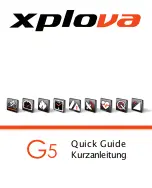
63
b
c
d
a
11 ADjUSTInG THe BIcYcle To
THe RIDeR.
Your body measurements are decisive for the frame size of your bicycle.
Make particularly sure there is enough space between your crotch and
the top tube so that you do not hurt yourself, if you have to get off your
bicycle quickly
(a)
.
If you have a very small frame, there may be a danger of your
foot colliding with the front wheel. Therefore, make sure your
cleats are properly adjusted.
By choosing a specific type of bicycle you roughly determine the posture
you will be riding in
(b)
. However, some components are designed in a
way that you can adjust them to your proportions to a certain degree,
such as seat post, stem and brake levers. Contact your BMW partner.
He will see to your wishes the next time you leave your bicycle at the
workshop, e.g. for the first inspection.
After any adjustment/assembly work, be sure to make a short functional
check as described in chapter
“Before every Ride”
and do a test ride
in an area away from traffic. This will allow you to safely check whether
everything is in good order.
All tasks described in the following require the know-how of a mechanic
and appropriate tools. Increase the tightening torque bit by bit, checking
the fit of the component in between. Use a torque wrench and never ex
-
ceed the maximum tightening torque! You will find the prescribed values
in chapter
“Recommended Tightening Torques”
, directly on the
components and/or in the manuals of the component manufacturers.
11.1 Adjusting the Saddle to the correct
Height.
The correct saddle height for almost all bicycle types is the height which
gives maximum pedalling comfort and efficiency. When pedalling, the
ball of your foot should be positioned above the centre of the pedal
spindles
(c)
. With your feet in this position you should not be able to
stretch your legs completely straight at the lowest point, otherwise your
pedalling will become awkward.
Check the height of your saddle with flat-soled shoes. This is best done
with suitable cycling shoes.
Sit on the saddle and put your heel on the pedal at its lowest point
(d)
.
Your leg should be fully stretched and your hips should remain horizontal.
To adjust the saddle height loosen the quick-release lever (see chapter
“How to Use Quick-Releases and Thru Axles“
) or the binder bolt
of the seat post clamp at the top of the seat tube. The latter requires
appropriate tools, e.g. an Allen key, with which you turn the bolt two to
three turns anticlockwise. Now you can adjust the seat post.
















































